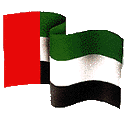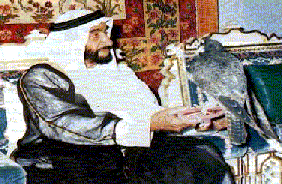United Arab Emirates | |||||||||||||||||
| U A E, Past,Present,Future | |||||||||||||||||

|
Few nations on earth have experienced more complete and far-reaching change over the past few decades than the United Arab Emirates. Today a land of six-lane highways and gilttering streams of motorcars, where space-age cities of ivory-white and crystal glass emerge like a mirage from the haze of desert and sea, this federtion of seven ancient Emirates - Abu Bhabi, Dubai | ||||||||||||||||

|
Life on the Trucial Coast - as it was known until the 1970s - and in its hinterland, was one of considerable hardship. In the towns, fresh water was scarcely available and often had to be drawn by oxen from deep wells, or even brought in barrels from neighboring islands by dhow. Tribesmen would harvest the unreliable winter rains by stretching a sail with a hole in its center between two poles, and in the merciless heat of the Arabian summer would trap the cooling winds by the ingenious use of wind-towers made of sackcloth or cotton. On the sun-blasted terraces of the Hajar Mountains, subsistence farmers eked out a bitter existence, and in the interior the hardy Bedouin scoured the dunes of the great Empty Quarter for pasture. In the hot months, members of these various groups would come together to work as divers in the pearl-yielding oysterbeds which flourished in the warm, shallow waters of the Gulf For almost three millennia the economy of this region was bound up with the pearling fleet, culminating in a boom that was only ended by the invention, in the 1920s of the cultured pearl. Despite its harsh climate, civilization has flourished in this region since the earliest times. At Jebel Hafit, near al-Ain, lie the remains of a settlement dating back more than five thousand years; at Hili, not far away, have been found pillbox-shaped tombs of dressed masonry so finely wrought that archaeologists believe they may be connected with the ancient land of Magan, mentioned in ancient Sumerian texts as a land of fabulous wealth, the source of copper, minerals and semi-precious stones. | ||||||||||||||||

|
Go Back To Mian page Go To Dubai Men's College Page Go To Hobbies Page | ||||||||||||||||
| |||||||||||||||||
|
This page has been visited
|
